Arkady Fiedler, Wanda Rutkiewicz or Maria Skłodowska-Curie are one of the most recognizable Polish explorers of the world of nature, sports and science. However, many surnames of Poles who are famous in the world and merited for the good of humanity still remain, widely unknown in our country. Check if you've ever heard of them.
Our countrymen have remembered beautifully in the pages of history, although today we often completely forget about them. Do you know these famous explorers?
King of the orchids
Józef Warszewicz, although he was not a scientist, but a gardener, his achievements in the field of botany are impressive. He brought several thousand specimens to Europe, several hundred of which were plants of unknown species.
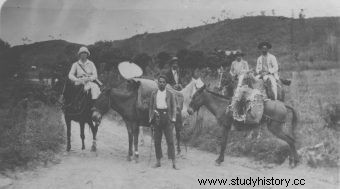
Michalina Isaakowa, a Polish entomologist, during an expedition to South America, collected a collection of over 15,000 insects
Warszewicz began his adventure with botany from studying natural science at the University of Vilnius, which he soon had to abandon due to financial problems. Then he got a job as a gardener in the Botanical Garden in Vilnius. All Warszewicz's life plans thwarted the outbreak of the November Uprising .
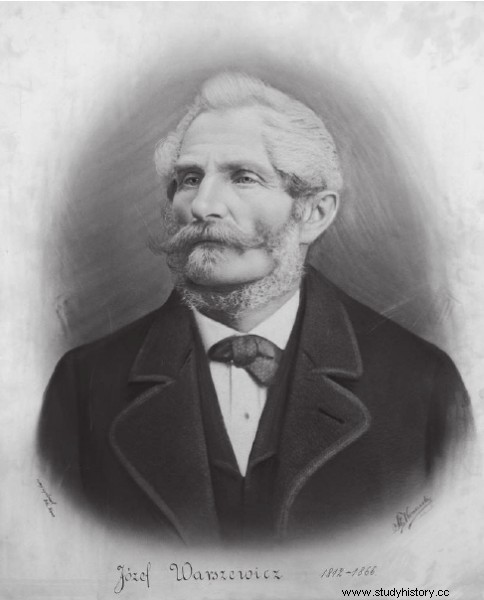
Józef Warszewicz (1812-1866) - an outstanding Polish botanist
After the uprising defeat, Warszewicz broke through forests to Prussia, worked for a short time as a gardener in Ekspruć, and then in the Berlin Botanical Garden, where his work in the years 1840-1844 attracted the attention of scientists. He was invited to participate in an expedition to find and bring unknown species of plants and animals from Central America to the Old Continent .
The sea expedition began on December 5, 1844, and the first destination was Guatemala. Upon arrival, nearly all participants died of yellow fever. Only Józef Warszewicz and the doctor survived. Warszewicz decided to continue working alone. In five years he traveled through the jungle of Honduras, Costa Rica, Nicaragua, Panama and, of course, Guatemala. It was not his last scientific expedition.
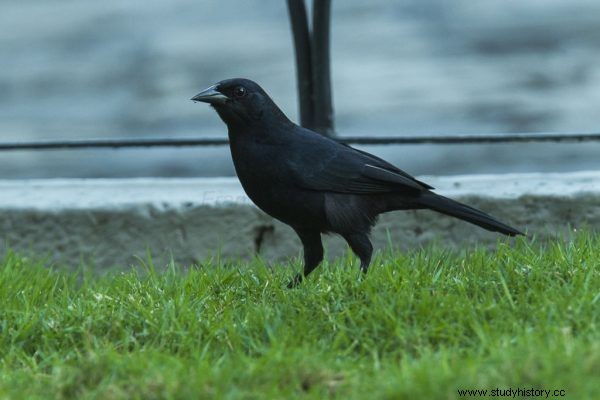
Peruvian Chernobyl (Dives warszewiczii)
Thanks to the expedition of the Polish botanist, Europe was enriched with several thousand tropical plants, including three hundred new varieties of orchids , then extremely adored on our continent. Many orchid varieties have been named after him. In addition, Józef Warszewicz made other discoveries - such as a new species of bird called Peruvian Chernobyls (Dives warszewiczii). After completing his expeditions to America, he received numerous job offers in England and Prussia, however he chose the Botanical Garden in Krakow.
Polish explorer of India
Gaspar da Gama was probably born around 1450 to a Jewish family in Poznań . When he was 10, he and his relatives moved to Italy, then Jerusalem, and finally settled in Egypt. He came to India around 1470, where he lived among the Jewish community, sailing and trading for 30 years before the Portuguese arrived by sea.
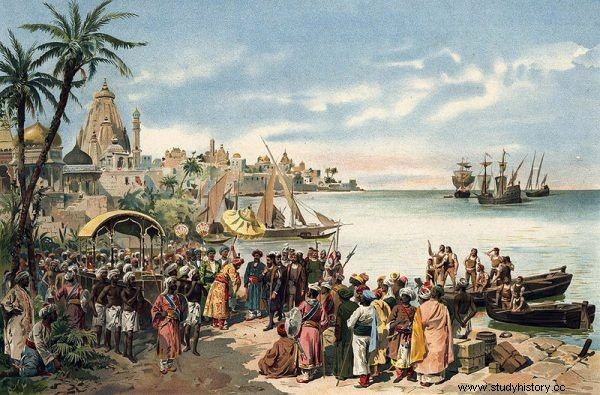
Arrival of Vasco da Gama to Kalikat in 1498, author of the painting Roque Gameiro
In 1498, Vasco da Gama sailed to India, where he was met with a cool reception, especially from Arab merchants, who until now were the only ones involved in trade between India and Europe. On September 23, 1498, Vasco da Gama, returning to Portugal, moored near the island of Angediva in the Arabian Sea and then, as the chronicler wrote:
A man, about forty years old, showed up and spoke Venetian well. He was dressed in linen, had a beautiful turban on his head, a sword at his belt. As soon as he jumped ashore, he hugged the commander and captains heartily, told us that he was a Christian from the West and had come to this country in his early youth. He is currently in the service of a certain Moorish nobleman.
An unexpected guest was Gaspar himself, who, under the guise of providing aid, wanted to verify the condition of the crew and the weapons themselves, as well as to find out about the Portuguese intentions. Vasco became aware of Gaspar's actions and ordered him to be imprisoned meanwhile, learning how a valuable prisoner he managed to capture.
He learned that Gaspar spoke several languages and was proficient in trade and ship navigation. After reaching Portugal, Vasco da Gama made a decision to release the prisoner and decided to adopt and baptize Gaspar. From then on, Gaspar's surname was da Gama.
The success of Vasco da Gama meant that King Manuel I the Happy announced another expedition. On March 9, 1500, an expedition to India set off with Gaspar on board. The wind directed the sea fleet, instead of towards Cape Verde, towards South America, and more specifically today's Porto Segura.
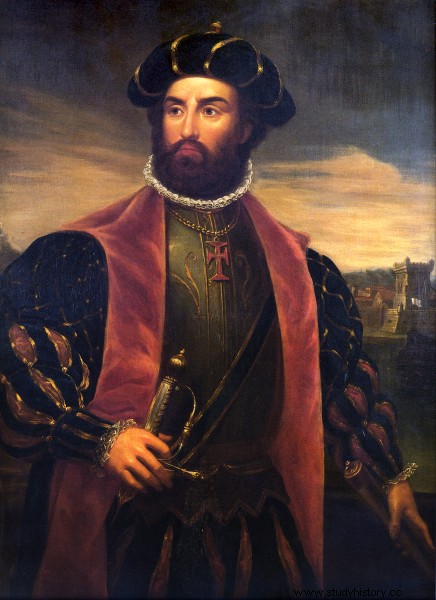
Vasco da Gama, godfather of Gaspar da Gama. The author of the painting is Antonio Manuel Da Fonsec
Thanks to this accident, Gaspar became the first Pole to reach Brazil . When the expedition successfully reached its original destination, it was founded by the Portuguese, thanks to the influence of Gaspar da Gama in India, the first trading post in this land, and in July 1501 the Portuguese returned to Lisbon with over 60 tons of spices.
During the next expedition, they achieved further commercial success, thanks to Gaspar's extensive contacts. Gaspar da Gama was famous throughout Portugal, and King Manuel I himself, in recognition of his merits, awarded Gaspar the title of Knight of the Royal Court.
In 1510, he was not heard of. There are two contradictory hypotheses among historians of Gaspar's death. One tells about natural death in Lisbon at the age of 60, and the other about the end of his life during the battles for the port of Kalikat in India.
A Polish girl in the Parana forests
Michalina Isaakowa is an entomologist and Polish woman who went alone on a trip to the South American forest. Despite her great courage and numerous successes, today hardly anyone remembers about this heroine. Juliusz Isaak, Michalina's husband, collected rare and valuable specimens, mainly beetles and butterflies. He shared his passion with his wife, who helped him look after the collection of insects.
In 1923, Michalina, after Juliusz's death, began to conduct independent entomological research. Although she did not have any specific education, she devoted herself entirely to her hobby and decided to set off on a lonely trip to South America.
In the years 1926-1928, Michalina Isaakowa explored the areas of the Brazilian state of Parana. In her work, she never gave up, although she encountered many adversities in the form of attacks by wild animals, bandit attacks or contracting a serious consequence of sunstroke.
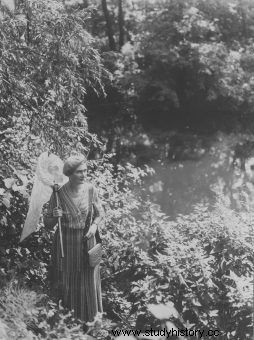
Michalina Isaakowa with a butterfly net on an entomological trip
Isaakova was admired and warmly welcomed by the settlers inhabiting the territories on her travel map. During her adventure, she mastered the art of horse riding and shooting with a carbine. Accommodation during the various stages of the expedition was to be provided in Polish homes in Brazil. Michalina Isaakowa recalled the situation of Poles who emigrated to South America:
They did not share [...] my admiration for the beauty of nature, but they complained about difficult farming, heat and disasters. They were confused by these wonderful views, these beautiful mountains… […] According to their views, they […] can be divided into two categories. Some, from the former court service, maintain that they are better here, having large farms impresses them; such people do not think about returning to the country at all. The rest are former farmers, who once had their own piece of land in Poland, they regret that they had got rid of their patrimony, following the example of others, remember the country fondly and dream to come back in their old age and lay their bones in their homeland.
Michalina Isaakowa returned to Poland with considerable luggage containing 15,000 specimens of insects, including unusual specimens of butterflies, beetles and mantis . Michalina's collection could be admired during numerous lectures and exhibitions, during which she talked about her lonely and extraordinary journeys in South America.
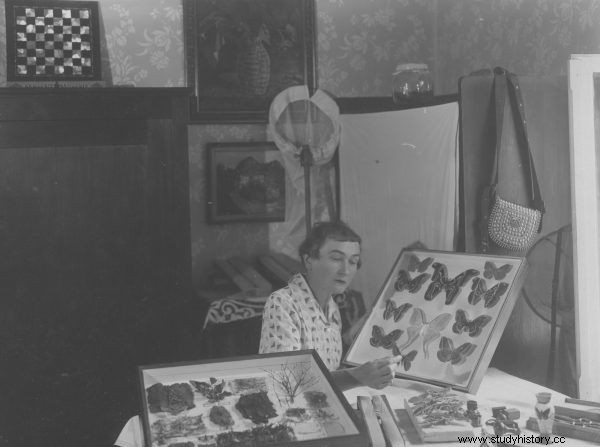
Michalina Isaakowa in the studio
Isaakowa, seeing how popular her entomological meetings are, decided to write a travel book "A Pole in Parana's Forest" . The introduction to this work was written by Arkady Fiedler himself, then a well-known and respected traveler:
In southern Brazil, in the years 1928–29, I often found traces of a strange woman in Polish colonies. Samiuteńka came from Poland, lived in Parana for two years and returned to the country just before my arrival in America. The woman, armed with incredible courage, walked alone among strangers, stayed among Indians and wild cabokels, broke into a dark forest, where even an armed man went reluctantly, and hunted all the time for the most peculiar and interesting game that South American nature had created:for insects, mainly butterflies. […] She has acquired a wonderful collection of grotesque beetles, cruel mantises, bizarre locusts and lovely butterflies, some with the span of our partridges […]. When I was visiting the area where it recently operated, I witnessed an interesting phenomenon, how the memory of her turned into a legend about a nice and brave "butterfly hunter".
In 1936, she began a second expedition to the territory of South America. Unfortunately, a year later Michalina Isaakowa disappeared without a trace and the body of a brave Polish entomologist has never been found. Most likely, she lost her life on a canoe trip across the Ucayali River.
Michalina Isaakowa, Józef Warszewicz or Gaspar da Gama are just the beginning of the list of outstanding figures. We should be proud of how many Polish travelers and explorers went down in golden letters in the history of the world. Our task is to properly cherish the memory of their achievements.
Bibliography:
- M. Isaakowa, A Pole in the Parana Forests, CM Publishing House 2011
- J. Łenyk-Barszcz, P. Barszcz, Beyond the horizon:Polish travelers, Zona Zero Publishing House 2016
- I.P. Magidowicz, The History of Knowledge of Central and South America, PWN 1979
- M. Mickiewicz, W. Mickiewicz, Dictionary of discoverers and conquerors - Latin America, Oficyna Wydawnicza "Atena" 1996
- M. Pilich, P. Pilich, Outstanding Polish explorers and travelers, Muza Publishing House 2018
- S. Zieliński, A small dictionary of Polish colonial and maritime pioneers, Publishing Institute of the Maritime and Colonial League 1933
